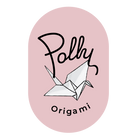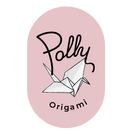The Ultimate Guide to Origami Paper for Making Animals
Discover the best types of origami paper and tips for making origami animals. Learn about standard kami, tissue foil paper, and how to choose the right materials.
Origami is a timeless craft that appeals to all ages. The right paper is crucial for creating beautiful and durable origami animals.
Types of Origami Paper
Standard Origami Paper (Kami)
Kami, often referred to as the standard origami paper, is the most common and well-known type of origami paper. It is usually white on the back and colored or patterned on the front, with a smooth texture. Kami is relatively thin, typically around 60 to 63 gsm, making it easy to fold and hold creases well. It comes in a wide variety of colors and patterns and is available in various sizes, ranging from 7.5cm x 7.5cm to 35cm x 35cm squares. This versatility makes kami suitable for most kinds of origami, from simple to complex models.
Tissue Foil Paper
Tissue foil paper is another popular choice for origami, known for its unique combination of foil and tissue paper. This paper is strong and stiff due to the foil, yet flexible and easy to fold thanks to the tissue. It is relatively thin, around 50 gsm, and comes in large sizes, making it ideal for both simple and complex models. The foil is not reflective, giving it a more subtle appearance. Tissue foil paper is particularly good for retaining creases and is often recommended for its ease of use and durability.
Choosing the Right Paper
Thickness and Strength
When choosing origami paper, the thickness and strength are crucial factors. Kami paper, for instance, is thin and resilient, making it suitable for most models. However, it can crack if folded multiple times in the same spot. Tant paper, on the other hand, is slightly thicker (around 80 gsm) and has a textured surface, making it more durable and less prone to ripping, despite its stiffness.
Washi paper, made from long plant fibers, is very thin but incredibly strong and durable. It has a fabric-like feel and is often used for its unique Japanese aesthetic, although it can be challenging to fold due to its thickness and fiber structure.
Size and Color
The size and color of the paper also play significant roles. Kami paper is available in a wide range of sizes and colors, making it versatile for various models. Tissue foil paper comes in larger sizes, which is beneficial for complex models that require more surface area. For models that require color changes, Duo Kami paper, which has different colors on each side, is an excellent choice.
Materials Needed for Origami Animals
Paper
The type of paper you choose will significantly impact your origami experience. For beginners, kami paper is highly recommended due to its ease of use and wide availability. For more complex models or those requiring specific textures, other types like washi, tant, or tissue foil might be more suitable.
Additional Tools
While paper is the primary material, other tools can be helpful. A flat surface for folding, a ruler or other straight edge for creating sharp creases, and sometimes a bone folder or similar tool to sharpen folds can be useful. However, for most origami, these additional tools are not necessary, and your fingers will suffice.
Step-by-Step Instructions
Easy Origami Animals
For beginners, starting with simple models like a traditional origami crane or a box is a good idea. These models require minimal folds and are great for practicing basic techniques. Kami paper is ideal for these models due to its smooth texture and ease of folding.
More Complex Models
As you gain experience, you can move on to more complex models such as origami birds with detailed wings or animals with intricate features. For these, tissue foil paper or tant paper might be more suitable due to their strength and ability to hold complex creases.
Tips and Variations
Decorating Your Origami
Once you have folded your model, you can decorate it to add a personal touch. This can include using markers, paint, or even adding small embellishments like glitter or stickers. For a more traditional look, you can use washi paper with its inherent Japanese designs and patterns.
Creating a Paper Zoo
Creating a collection of origami animals can be a fun and rewarding project. You can use different types of paper to create a variety of animals, each with its unique characteristics. For example, using tissue foil paper for a shiny snake or washi paper for a traditional Japanese-style rabbit can add diversity to your paper zoo.
Resources and Tutorials
Online Tutorials and Videos
There are numerous online resources available for learning origami, including video tutorials and step-by-step guides. Websites and YouTube channels dedicated to origami provide detailed instructions for various models, from simple to complex. These resources are invaluable for both beginners and experienced folders looking to improve their skills.
Educational and Fun Activities
Origami can be a great educational tool, teaching patience, precision, and creativity. It can also be a fun activity for families or groups, promoting teamwork and collaboration. Many schools and community centers offer origami classes or workshops, which can be a great way to learn and enjoy this traditional Japanese art form.
Conclusion
Choosing the right origami paper is essential for a successful and enjoyable experience. Explore different types of paper and enjoy the creative process of making origami animals.










